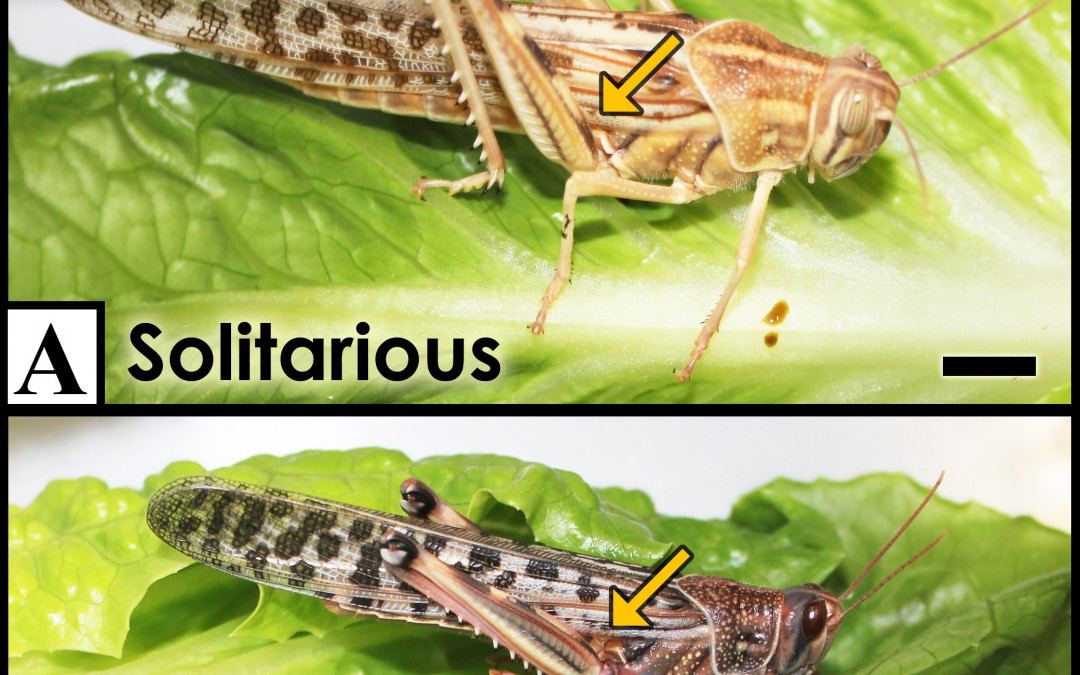
by Shira | Oct 9, 2016
Insects display signs of ageing, despite their short lifespan. However, the limited studies on senescence emphasize longevity or reproduction. We focused on the hearing ability of ageing adult locusts, Schistocerca gregaria. Our results indicate that the youngest...

by Shira | Oct 1, 2014
Locusts display a striking form of phenotypic plasticity, developing into either a lone-living solitarious phase or a swarming gregarious phase depending on population density. The two phases differ extensively in appearance, behaviour, and physiology. We found that...





Recent Comments